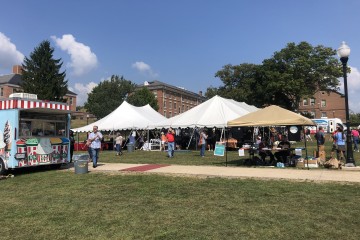Trump-Kim Summit in Hanoi
Less than a year ago, leaders from North Korea and the United States met for the very first time in Singapore to discuss general security measures that benefit North Korea, harmonious relations between the nations involved in the summit, and the denuclearization of the Korean peninsula. Following the first summit, plans went into effect to do most things discussed between the two countries, but most importantly, Trump announced in a press conference following the summit that the United States would cease its seemingly hostile exercises in cooperation with South Korea. The need for the first summit was evident considering the heightening tensions between North Korea and the United States, which only escalated with every threat passed on, such as supposedly detonating their first hydrogen bomb. Just at the peak of this collision, the two sides agreed to meet, and after some discourse selected a time and place.
The first summit, rocky if nothing else, was a debatable success, but it did pave the way for further negotiation and integration of a very much isolated nation that has been hostile towards the United States ever since the not so peaceful resolution in 1953 following the end of the Korean War. North Korea has been known as an “axis of evil” since the early 2000s. On North Korea’s end, the agreement that they came to with the Trump administration involved getting rid of nuclear materials as stated above, as well as returning remains of dead soldiers. Action was set forth to begin this long process. Steps to fulfill their agreement involve, but are not limited to, dismantling the Sohae test and launch site, shutting down ballistic missile factories, returning the remains of roughly 55 American soldiers killed in the Korean War, and the tearing down of Anti-American propaganda. These steps are all necessary in order to better relations between these formerly mutually hostile countries.
The second summit took place in late February of this year, the purpose of which was to follow the progress North Korea has made on fulfilling their conditions, better relations, and expand on the consensus reached eight months ago. The live feed featured on most news platforms allowed the world to see Trump shaking hands with Kim Jong-Un. The leaders then moved into a private discussion where only interpreters were allowed, preceding a “private” dinner, as Trump said, where numerous cameras were present filming and snapping photographs to capture such a monumental moment. The second day of the summit was meant to be the day of a joint signing ceremony to finalize the agreement. However, plans fell through, and the summit was cut short. During a press conference after the summit, Trump and his press secretary, Sarah Sanders, explained that the abrupt ending was brought on by demands from the Korean government and the sanctions placed on them by the United Nations. The sanctions were initially placed in the 1950s, but were made stricter in the 1980s after bombing attacks against South Korea were carried out by North Korean agents. Hours after that accusation, North Korean officials clarified publicly that out of a total of eleven sanctions, they only asked for five to be lifted, and that altogether they were only asking for a partial lift on sanctions. Trump walked away from this suggestion immediately despite the offer of permanently dismantling their primary nuclear facility and allowing American experts to observe in exchange.
Trump’s decision to walk away from that offer was supported by both Japan and South Korea. The only regret, which was voiced by a spokesman for the President of South Korea, was “we do regret that President Trump and Chairman Kim Jong Un did not reach a complete agreement at today’s summit… [but the summit] made more meaningful progress than any other time in the past.”
All in all, as with the last summit, it is debatable as to whether this summit was a success or a menial task that was the best we could do for now. What is not debatable is that there is more work and communication now between the United States and North Korea than there has ever been before, and for that reason, these summits will have a place in the history books.



